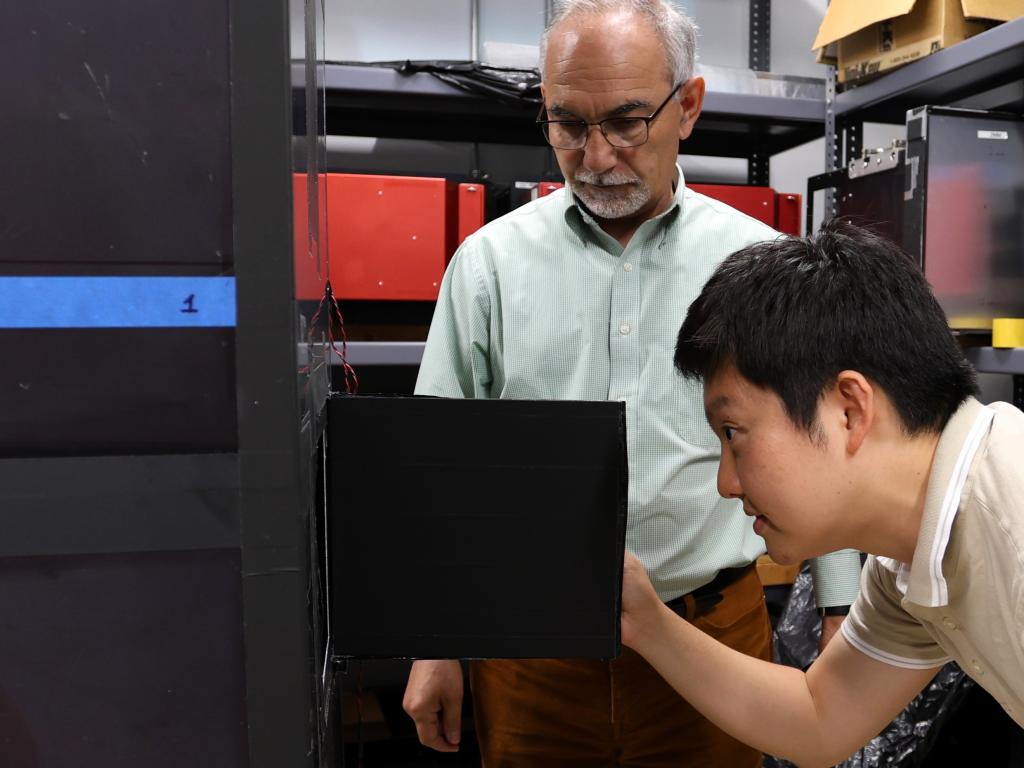At a milestone fusing physics, engineering and innovation, researchers at the Department of Energy’s Oak Ridge National Laboratory (ORNL) have developed a mobile Muon detector.
This cutting-edge system is designed to probe dense materials, improve nuclear fuel monitoring, and tackle one of the toughest challenges in quantum computing.
Muons, electron-like subatomic particles, are heavier, but pass through the material at almost speed. The ability to penetrate dense materials makes it invaluable for imaging applications.
However, their fleeting lifespan – just a few microseconds compared to 10 minutes of neutrons – has historically limited practical use. ORNL’s new Muon Detector overcomes these challenges and creates new opportunities for science and technology.
Addressing nuclear security issues
Muon detectors are ready to revolutionize the way scientists monitor and protect nuclear materials.
By analyzing the way Muons scatter and lose energy as they pass through matter, the system provides detailed images of objects, such as shielded nuclear fuel cans.
Unlike previous detectors that relied on a single measurement, the device simultaneously measures both Muon energy and scattering angles, achieving clearer and more accurate imaging.
This advancement has direct implications for nuclear security. From tracking spent nuclear fuel to supporting the development of next-generation nuclear reactors, detectors increase accountability in nuclear material management.
Its applications will be extended to waste disposal strategies and help the US and the global community strengthen protection measures against potential risks.
Supporting the future of quantum computing
Beyond nuclear science, this detector helps to solve one of the most pressing hurdles in quantum computing: qubit stability.
Quabits, the basic building blocks of quantum computers, are extremely sensitive and prone to errors caused by cosmic radiation.
By studying how Muons and other space particles interact with qubits, researchers can improve error correction methods and design more resilient quantum hardware.
Without this advancement, scaling quantum computers beyond controlled lab environments remains out of reach.
Therefore, the Muon detector plays a dual role. Ensuring nuclear safety while promoting next-generation computing.
Born from interdisciplinary collaboration
The project highlights the power of collaboration in the science field. The Muon detector idea occurred during a doctoral study on computational simulation of Muon tomography.
But when the original creator Junghyun Bae found inspiration at the existing Neutron Detector on display at the American Museum of Science and Energy in Tennessee, it took root in ORNL.
Originally built by Ornl’s director of Neutron Sciences and won the prestigious R&D 100 award in 2012, its neutron detector provided a blueprint for adapting wavelength-varying fiber technology to Muon detection.
By combining Neutron Sciences with Fusion and Fission Energy Research’s expertise, the ORNL team has transformed the concept entirely into an operational system for two years.
Bae added: “I am thrilled to have this vision come to fruition, and there is an incredible community here at ONL and the support I received is invaluable.
“This project exemplifies the power and innovation of interdisciplinary collaboration at ORNL.”
A new era of moon imaging
The Muon detector will soon be moved to ORNL’s specialist facility for actual testing.
Once the test begins, the detector promises to play a pivotal role in two important areas. It strengthens nuclear protection measures and accelerates the dawn of practical quantum computers.
In doing so, it shows how collaborative ingenuity can transform long-standing scientific challenges into groundbreaking solutions.
Source link

